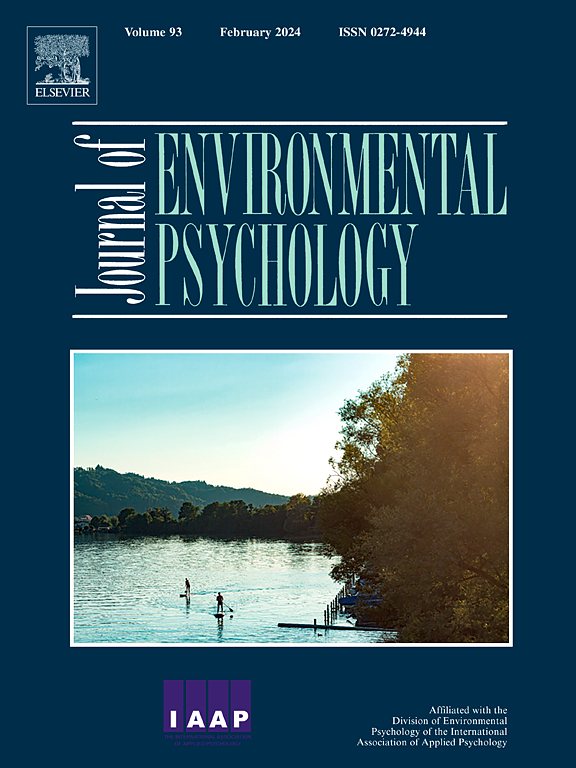A large-scale study of binding communication to promote ecological Behavior: the commitment technique combined with persuasive communication in mass media streaming
IF 7
1区 心理学
Q1 ENVIRONMENTAL STUDIES
引用次数: 0
Abstract
The climate emergency necessitates the adoption of effective communication strategies. While persuasive communication is easily scalable, its effectiveness at changing behavior is limited. In contrast, commitment techniques, such as foot-in-the-door and low-ball techniques, are more effective for behavior change but harder to scale. In this study, we test the effectiveness of combining a commitment strategy with persuasive communication in the streaming broadcast of an audiovisual show. Study 1, conducted in an “as if" setting with a full experimental design (N = 1003), showed that incorporating a commitment strategy into persuasive communication effectively promoted pro-ecological behavior, although it did not lead to a significant change in attitudes. In Study 2, conducted in an ecological setting during a live broadcast of an international rugby tournament (N = 240,245), we showed that combining commitment and persuasive strategies increased the intention to engage in behaviors that reduce digital pollution.
约束传播促进生态行为的大规模研究:大众媒体流中的承诺技术与说服传播相结合
气候紧急情况要求采取有效的沟通战略。虽然说服性沟通很容易扩展,但它在改变行为方面的效果有限。相比之下,承诺技巧,如脚踏实地和低球技巧,对行为改变更有效,但更难衡量。在本研究中,我们测试了承诺策略与说服沟通相结合在视听节目流媒体播放中的有效性。研究1是在一个完整的实验设计(N = 1003)的“as if”环境中进行的,研究表明,将承诺策略纳入说服性沟通有效地促进了亲生态行为,尽管它并没有导致态度的显著变化。在研究2中,在国际橄榄球比赛直播期间的生态环境中进行(N = 240,245),我们表明,承诺和说服策略相结合增加了参与减少数字污染行为的意愿。
本文章由计算机程序翻译,如有差异,请以英文原文为准。
求助全文
约1分钟内获得全文
求助全文
来源期刊

Journal of Environmental Psychology
Multiple-
CiteScore
10.60
自引率
8.70%
发文量
140
审稿时长
62 days
期刊介绍:
The Journal of Environmental Psychology is the premier journal in the field, serving individuals in a wide range of disciplines who have an interest in the scientific study of the transactions and interrelationships between people and their surroundings (including built, social, natural and virtual environments, the use and abuse of nature and natural resources, and sustainability-related behavior). The journal publishes internationally contributed empirical studies and reviews of research on these topics that advance new insights. As an important forum for the field, the journal publishes some of the most influential papers in the discipline that reflect the scientific development of environmental psychology. Contributions on theoretical, methodological, and practical aspects of all human-environment interactions are welcome, along with innovative or interdisciplinary approaches that have a psychological emphasis. Research areas include: •Psychological and behavioral aspects of people and nature •Cognitive mapping, spatial cognition and wayfinding •Ecological consequences of human actions •Theories of place, place attachment, and place identity •Environmental risks and hazards: perception, behavior, and management •Perception and evaluation of buildings and natural landscapes •Effects of physical and natural settings on human cognition and health •Theories of proenvironmental behavior, norms, attitudes, and personality •Psychology of sustainability and climate change •Psychological aspects of resource management and crises •Social use of space: crowding, privacy, territoriality, personal space •Design of, and experiences related to, the physical aspects of workplaces, schools, residences, public buildings and public space
 求助内容:
求助内容: 应助结果提醒方式:
应助结果提醒方式:


